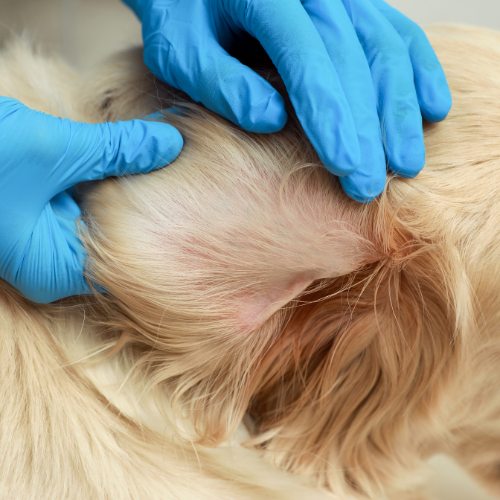We’re starting to see a few warmer days.
With warm weather comes more bugs.
And it is one type of bug that you’ll need to watch out for during the spring and upcoming summer months: a tick.
This teeny tiny insect can pose a threat to you and your dog’s health if you are both bitten by one.
If the warm weather leads you and your dog outside for a stroll or simply in your yard, please keep the following information in mind to protect yourself and your dog from those pesky little ticks.
What is the Issue with Ticks?
You probably already know this, but ticks can carry a bacteria called Borrelia burgdorferi, which can cause Lyme Disease in dogs and humans.
Lyme Disease is the illness caused by Borrelia burgdorferi, which is transferred to dogs and humans by bites from back-legged ticks (deer ticks) that are carriers of the bacteria.
The issue with Lyme Disease is that symptoms of it may not show right away. It can take two months or more before the disease really manifests itself.
Symptoms of Lyme Disease in dogs can include:
• Fever
• No or low appetite
• Lameness
• Swelling
• Lethargy
Lyme Disease is treatable. The course of treatment for a dog with Lyme Disease would consist of antibiotics.
However, you should also keep in mind that some ticks may carry other diseases that can make your dog sick, which is why it’s important to check your dog consistently if you both spend time in tick-prone areas.
Where Can Ticks be Found?
It is recommended that you keep your dog away from tall grass, shrubs, dark and damp places, and wooded areas etc. These areas are prone to ticks during the warmer seasons like spring and summer.
After you and your dog come back inside, be sure to check yourself and your dog for any ticks if you have been near areas where ticks are likely to be.
When examining your dog for ticks, check the following areas of their body:
• Inside their groin area
• Between their toes
• Eyelids
• Under their collar
• Under their tail
• Inside/outside their ears
What to Do
If you see a tick on your dog, contact your veterinarian for instructions on what to do next.
If you are concerned about tick prevention for your dog, consult with your veterinarian FIRST.
Let them instruct you on the proper way of preventing and treating tick bites according to your dog’s individual needs.
In the meantime, continue to keep yourself and your dog away from tick-prone areas as much as possible. Be sure to check yourself and your dog after coming back inside frequently.

